Conopholis americana
A parasitic wildflower getting its nutrients from a host tree
Conopholis americana American cancer-root
This wildflower is unusual because it is totally parasitic, mostly on the roots of oak and beech trees. Squawroot is a native flowering plant of eastern United States and Canada and is a member of the broomrape family. Suckers on its roots cause the formation of rounded knobs (haustoria) on the roots of the host tree. Since these are underground, they are seldom seen. The host tree is the only source of nourishment for the squawroot, but the parasite seems to do no serious harm to the host tree. This plant does not carry out photosynthesis and has no true leaves. In the spring, the plant produces a cluster of thick brown stems—the only part that ever appears above ground. These look like a group of pinecones or corncobs and grow near the host tree.
The stems may be 4 to 8 inches tall. Each stem bears a number of small, lipped and hooded flowers. These are about 0.5 inches wide. Under each flower is a scale-like non-photosynthetic leaf. Each flower becomes a seed capsule after fertilization. Deer and bears may eat the plant and help distribute the seeds. Later in the season the flower stems become dry and turn brown. It is also called bear corn or cancer root. It is common in woodlands in eastern North America. Like many plants, Native Americans used it as a medicine. Little scientific research has been done on the chemicals that might be medically useful in this plant.
Habitat & Range
Occasional in forests.
Mostly found south and west of state.
Wetland code: Not classified
Phenology
Flowers May to early June.
Plant Codes
S-rank: S5 (Secure)
G-rank: G5 (Secure)
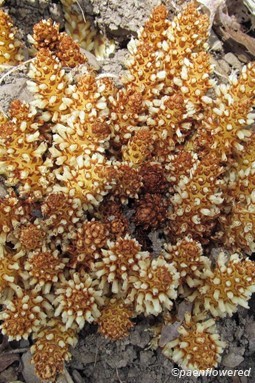
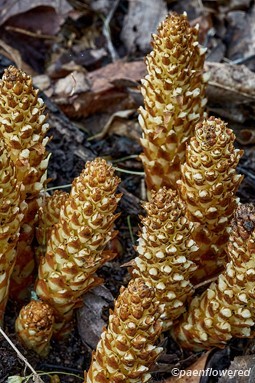

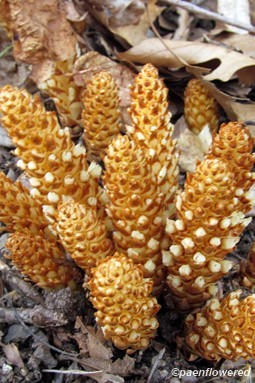
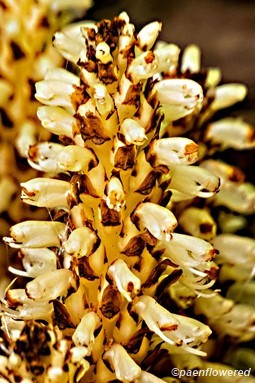
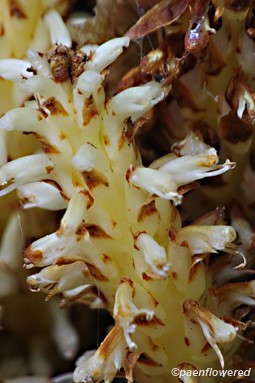
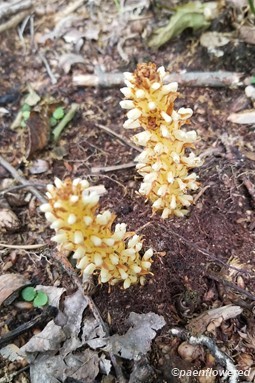

Comments
Have you spotted this plant in your area? We'd love to hear about your experience! Share your comments or questions about the plant below. Comments are moderated before posting.